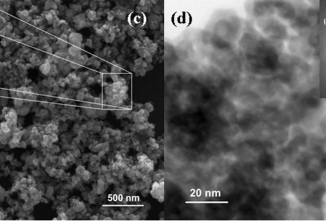
Photoluminescent properties of the europium and terbium complexes covalently bonded to functionalized mesoporous material PABA-MCM-41
Abstract: In this study, we describe the synthesis of the functionalized inorganic-organic material p-aminobenzoic acid MCM-41 by modification from p-aminobenzoic acid (PABA) and the covalently immobilization with rare earths (Eu3+, Tb3+) is also reported. The mechanism for the formation of the PABA-MCM-41 is known as the “Liquid Crystal Templating” (LCT) in which the liquid crystal molecules of a surfactant works as an organic template in the formation of the hexagonal structure. The complexes were characterized by FTIR, XRD, SAXS, N2 adsorption/desorption, TGA, SEM, and luminescence analyses. The mesoporous materials exhibited the hexagonal mesostructures typical of the M41S family, as confirmed by XRD and SAXS, with high surface areas and thermal stability. The luminescent properties of the Tb-PABA-MCM-41 and Eu-PABA-MCM-41 complexes were more efficient, compared with pure Tb(PABA)3 and Eu(PABA)3 complexes, respectively. The more intense emissions are observed when the system is excited at the transition of the ligand. The lifetimes data of the Tb-PABA-MCM-41 complex presents longer lifetime (0.26 ms) than Eu-PABA-MCM-41 complex (0.12 ms).
Author(s): Costa, Jose Arnaldo S.; de Jesus, Roberta A.; Dorst, Diane D.; et al.
Journal of Luminescence
Volume: 192 Pages: 1149-1156 Published: 2017
DOI: https://doi.org/10.1016/j.jlumin.2017.08.046




